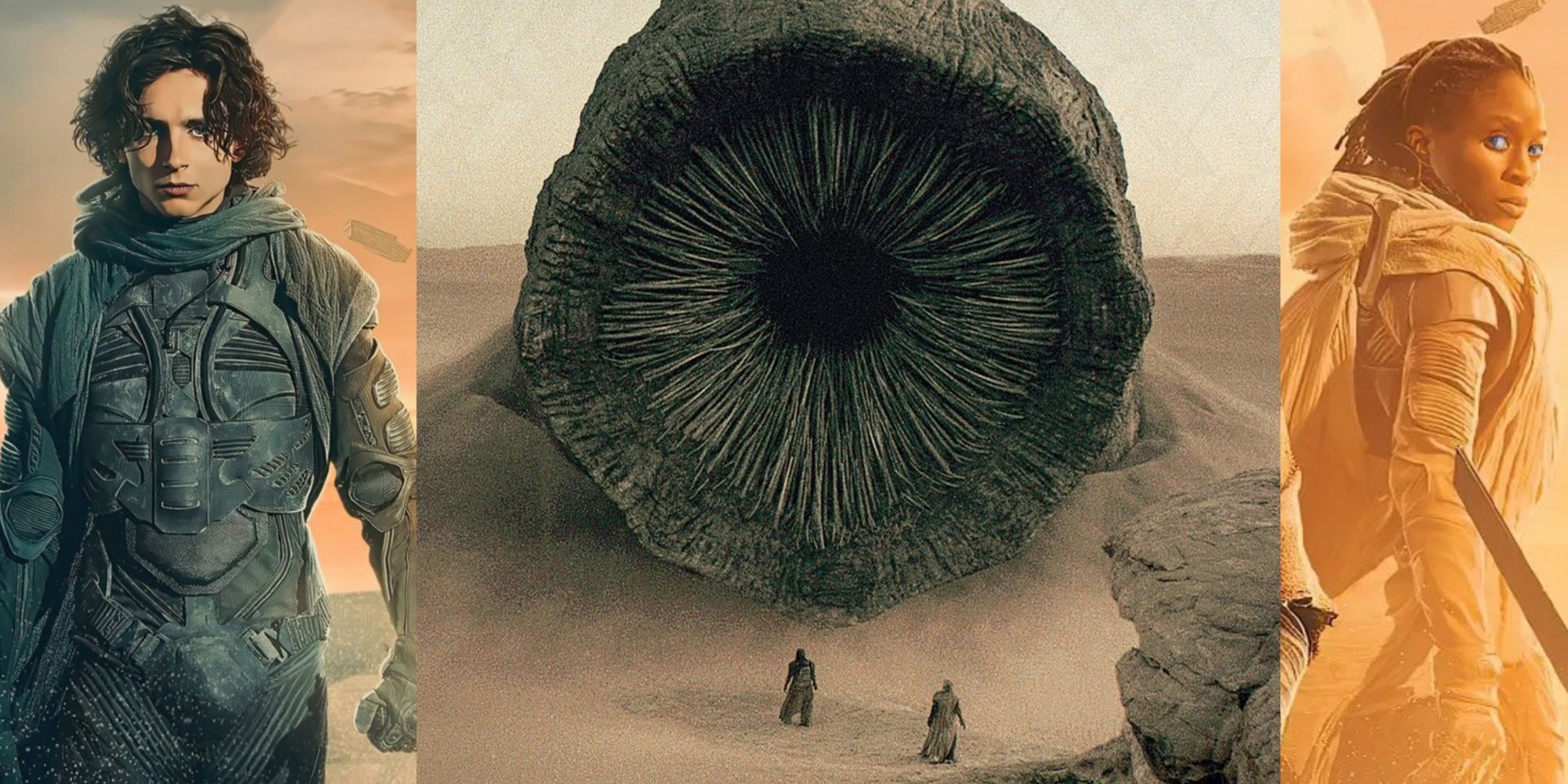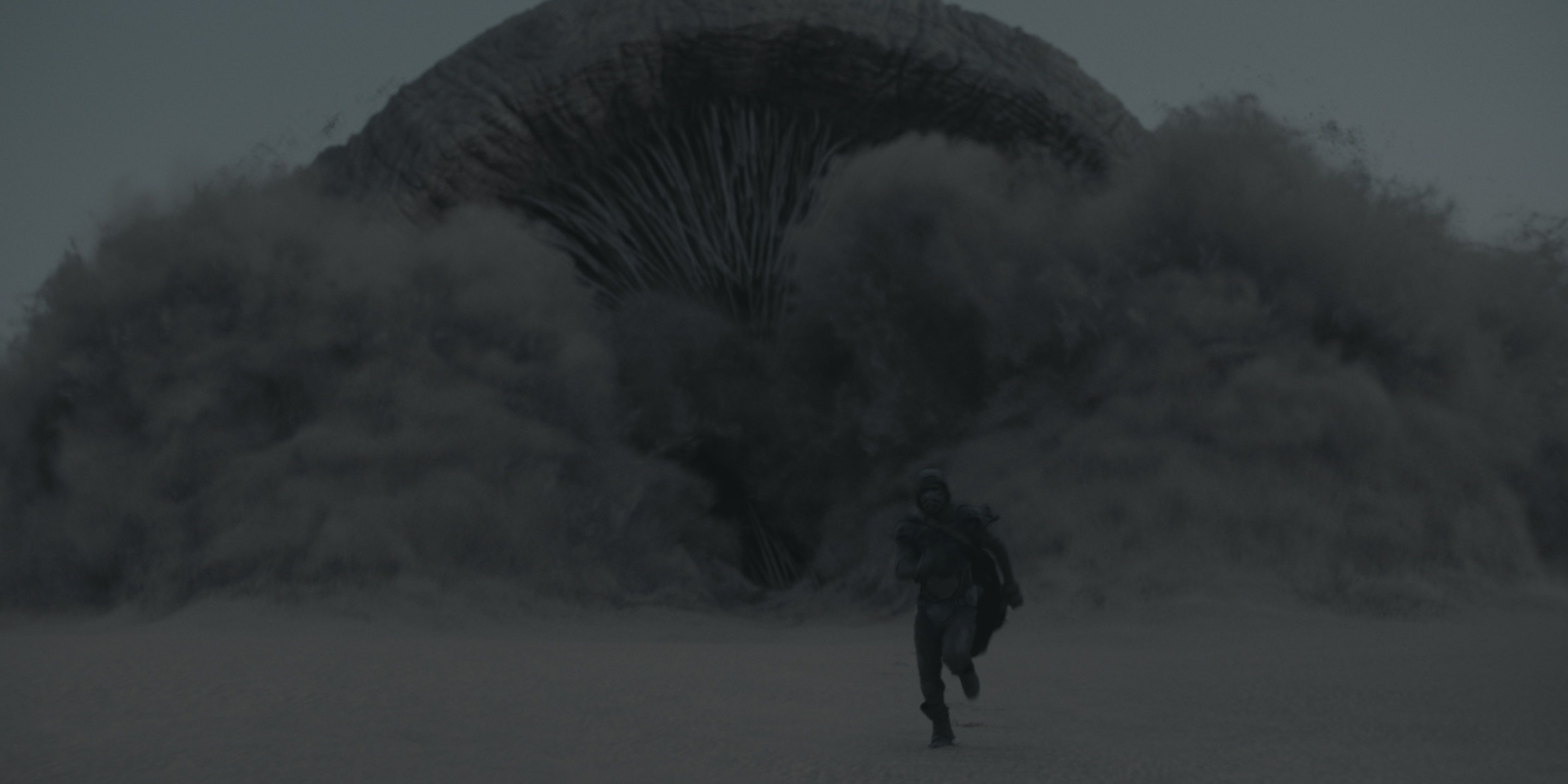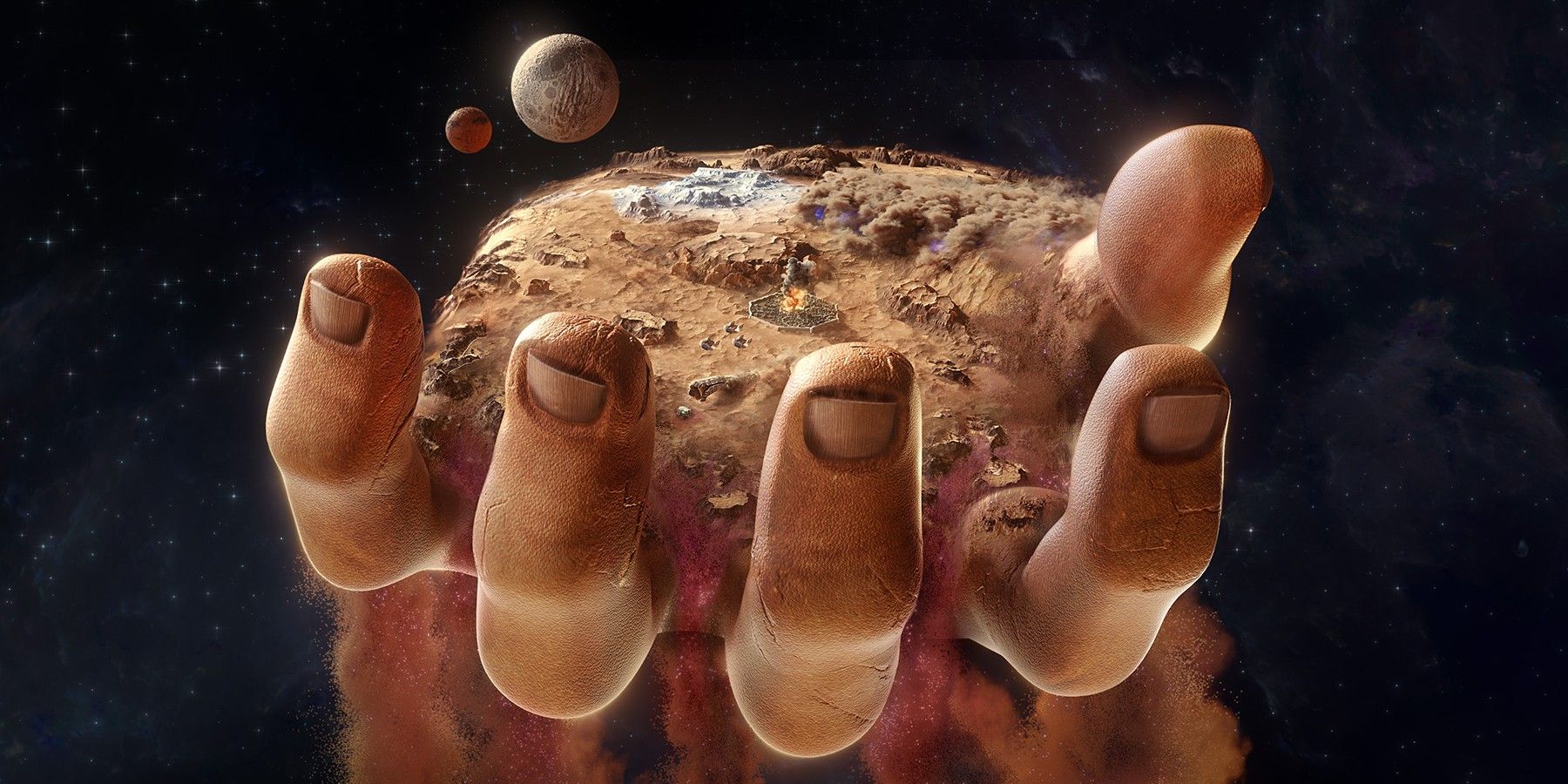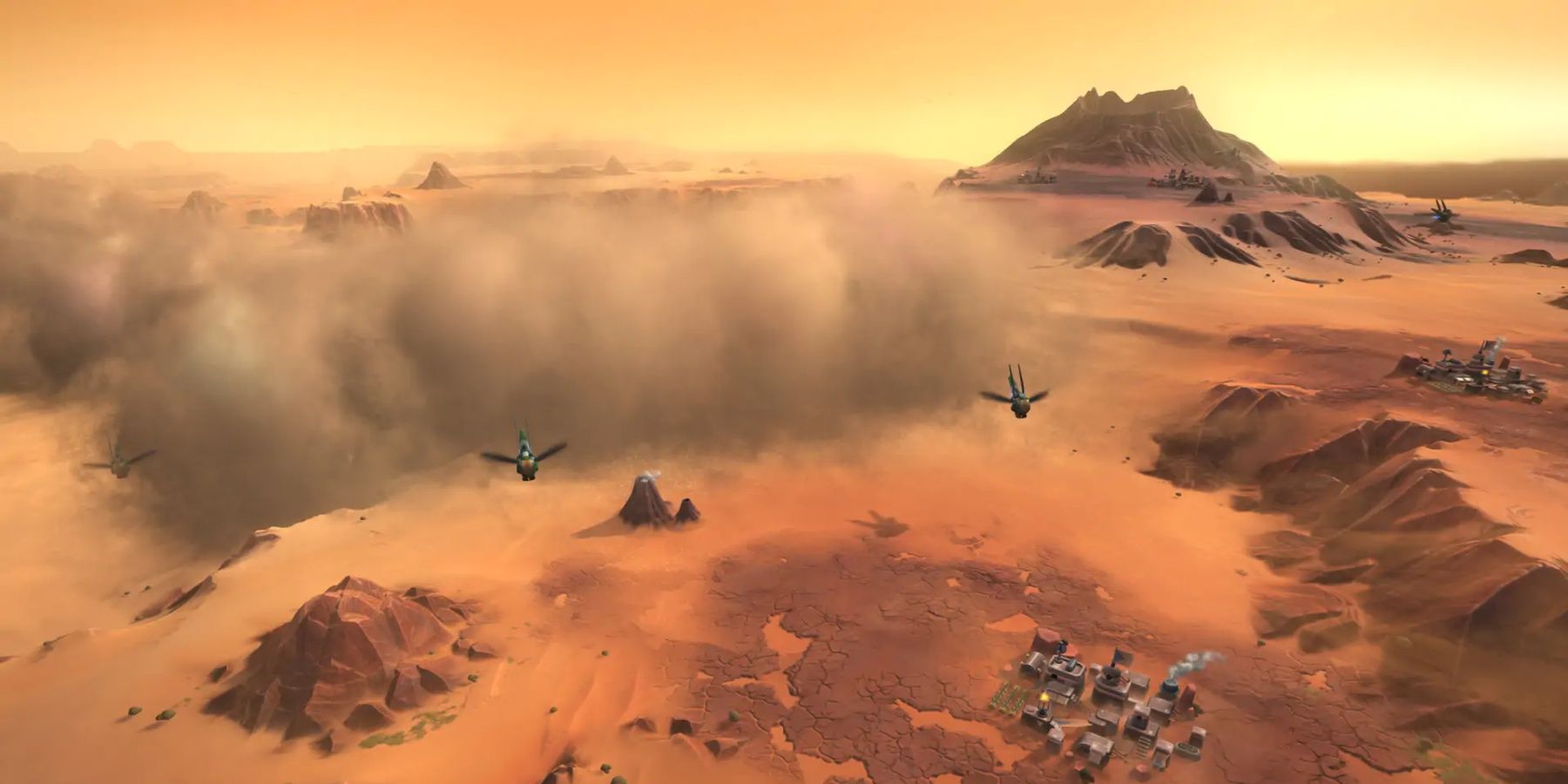There aren't many animals that can live in the harsh deserts of Arrakis, but one of them is the Giant Sandworm. This creature could be the most important being in the vast universe of Dune. The sandworms of this legendary planet are the source of religious mystery and scientific discovery, and the spice they produce makes humanity's domination of the universe possible.
Frank Herbert was inspired by the malevolent dragons of European mythology that would guard a fantastic treasure when he created the giant sandworms. They are known by many names and titles to denote their status and power, especially their significance to life on Dune and the religious beliefs and social order of the Fremen. Here are some interesting facts to remember about one of literature's most iconic monsters.
7 Shai-Hulud
This is the formal name of the sandworm, and it's a Fremen term that's often used respectfully and in times of prayer. Other words that the Fremen use to refer to the giant sandworms include Old Father Eternity, Makers, or Grandfather of the Desert. However, Shai-hulud is the only title used by the Fremen alone.
The Shai-hulud doesn't just live for a long time. It's also the source of precious spice and an integral part of the Fremen's spiritual beliefs. The Fremen believe that the giant sandworms are the embodiment of the One God that created the universe, and their connection to the spice and the Water of Life makes them of particular interest to certain groups.
6 The Zensunni Religion
In the lore of Dune, there was a period in human history when Zen Buddhism and Sunni Islam joined together to form one faith. This evolved into the Zensunni religion. The Bene Gesserit were one organization that embraced the tenants of this faith. Their techniques of using the Voice and their breeding programs to control and influence fit with the Zensunni beliefs of non-violence.
The Fremen culture included strict adherence to the Zensunni faith. This, along with the presence of melange, drew the Bene Gesserit to the planet. The giant sandworm has become one of the symbols of this religion because of its connection with melange and the Water of Life.
5 The Sand Trout And Spice Blows
The first book in the Dune series has some information about the phenomenon known as spice blows. Liet-Kynes was killed by a spice blow in the book, which is different from the version of the character in the movie that was eaten by a sandworm.
Little is known about the life cycle of a giant sandworm, but they all start as small, leech-like creatures known as sand trout. They play a more important role in the novel Children of Dune, in which Leto II, Paul's son, joins with several of them to begin the process of becoming a giant sandworm-human hybrid.
4 An Autotrophic Organism
The sandworm is not a mammal or reptile, but a giant autotrophic organism. It eats substances that are inedible or even toxic to other life forms. It produces a substance from what it consumes that other beings can use for certain purposes. The main one is the spice melange, but the other is also the Water of Life, a secretion that is released when a worm drowns. Water is one of the few substances that can harm a sandworm. Their massive size and thick hides make them impervious to virtually everything else.
The shape itself is called an annelid, which is the scientific name for a segmented worm. Herbert compared the mouth, lined with long crystalline teeth, to that of a sea lamprey. These teeth are strong enough to grind the worms' food, which is why make such good weapons.
3 How To Ride A Worm
In addition to being majestic and producing the precious spice melange, giant sandworms can also be used for transportation. Not just anyone can do this, though. Although the Fremen have perfected the art, it takes special techniques and tools to accomplish.
Contrary to how it may look, the tools that a Fremen uses to ride a worm aren't used to climb up the side of the animal. They're intended to open the protective scales on the worm's side and allow the sand to seep inside. The irritation causes the worm to turn upward, away from the irritation and lifts the rider along with no climbing required.
2 The Color Of Melange
The color and smell of melange has been compared to the dark brownish-orange of cinnamon. Those that have been close enough to a giant sandworm can attest that the worm has taken on the same color. Since the worms don't spend much time above the ground, their actual color or markings, especially after years of maturity, is something of a mystery.
The size and habitat of the giant sandworm make it a dangerous task to study them, but Liet-Kynes made some significant discoveries despite the inherent difficulty. Their bodily fluids, when mixed with water that they find deep below the surface, create the phenomenon of spice blows, one of the steps in the creation of the sacred consumable.
1 Shock Value
The static electricity of a thousand million pieces of sand moving in the desert with the sand worms creates a massive amount of static electricity. Worms often pulse and crackle with live electrical currents. This wasn't just an effect that David Lynch put in the old movie for the visual effect, it's a real-world phenomenon.
The term for lightning like this, which is created through friction, is known as dry lightning. Residents of Arrakis use it to predict where a worm will breach from the sand. This knowledge can also be used as a weapon if the Fremen ride the worms to battle, which happens in the final scene of the 1980s adaptation.











